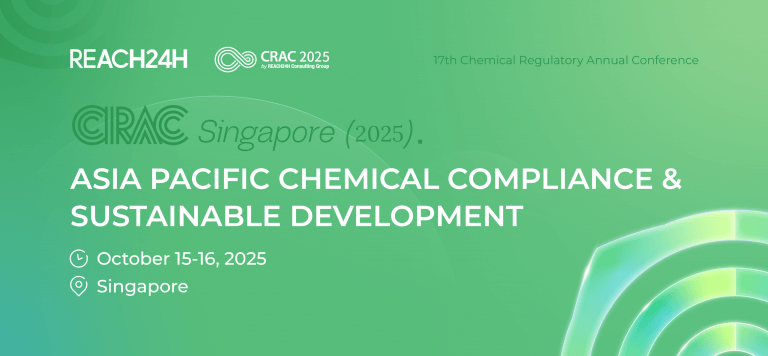As global chemical regulations tighten, particularly under the far-reaching EU REACH Regulation, chemical companies are facing increasingly complex compliance challenges. Among the essential tools under REACH are the Chemical Safety Report (CSR), the Safety Data Sheet (SDS) and its extended version (eSDS), and the Exposure Scenario (ES). A clear understanding of these three elements—their definitions, interrelationships, and associated obligations—is not only key to meeting legal requirements but also to ensuring sustainable development, protecting human and environmental health, and securing access to global markets, especially in the European Union.
This article provides a comprehensive overview of CSR, SDS, and ES, highlighting their respective roles and the key compliance points companies must focus on to navigate REACH successfully.
What Is a CSR (Chemical Safety Report)?
The Chemical Safety Report (CSR) is a technical document that captures the full process and results of a chemical safety assessment. It is submitted to the European Chemicals Agency (ECHA) and is not typically shared with downstream users.A CSR includes the following core assessments:
- Physicochemical hazard assessment: Identification of physical and chemical hazards.
- Human health hazard assessment: Evaluation of health risks and derivation of DNELs (Derived No-Effect Levels).
- Environmental hazard assessment: Determination of environmental risks and PNECs (Predicted No-Effect Concentrations).
- PBT/vPvB assessment: Evaluation of whether a substance is Persistent, Bioaccumulative, and Toxic, or very Persistent and very Bioaccumulative.
- Exposure scenario development and risk characterization: For hazardous substances, a risk assessment is performed for each identified use, accompanied by exposure scenarios.
What Is an SDS (Safety Data Sheet)?
The Safety Data Sheet (SDS) is a globally recognized standardized document that communicates essential safety information for substances and mixtures. It includes hazard identification, safe handling and storage recommendations, emergency response measures, and more.Under REACH, SDSs play a crucial role in supply chain communication. When a substance requires exposure scenarios (ES) based on risk assessment outcomes, these ES must be attached to the SDS, creating an extended SDS (eSDS). The SDS/eSDS ensures the safe use of chemicals by providing downstream users with actionable guidance.
What Is an ES (Exposure Scenario)?
An Exposure Scenario (ES) describes the operational conditions and risk management measures under which a chemical substance can be safely used. It includes:
- The industrial or professional process in which the substance is used
- Operational conditions (e.g., frequency, duration, quantity)
- Risk management measures (e.g., PPE, ventilation)
- Target groups (e.g., workers, consumers)
- Environmental compartments (e.g., water, air, soil)
Exposure scenarios are typically derived from use information provided by downstream users in the EU or through industry associations and lead registrants. They translate complex toxicological data from the CSR into practical safety instructions tailored to specific use cases.
The Interrelationship Between CSR, SDS/eSDS, and ES
The CSR, SDS (and eSDS), and ES are interconnected components of REACH's chemical safety system, forming a structured pathway for information flow and risk management.Here's how they relate:
- CSR is the foundation: It includes all safety assessments and, if necessary, detailed exposure scenarios (usually in Sections 9 and 10 of the CSR).
- ES originates from the CSR: These scenarios describe safe-use conditions and are refined based on identified uses.
- ES becomes part of the eSDS: The relevant ES is extracted, simplified, and appended to the SDS, forming the extended SDS.
- eSDS is distributed to downstream users: As required by Article 31(7) of REACH, eSDS must be communicated down the supply chain to ensure the safe use of the chemical in real-world applications.
This flow ensures that risk assessments are not siloed but are translated into practical, enforceable safety measures throughout the supply chain. If a standard SDS is insufficient—particularly for hazardous substances or complex uses—the eSDS bridges the information gap.
Compliance Checklist: What Chemical Companies Must Know
To comply effectively, companies should assess whether and when CSR, ES, and eSDS obligations are triggered. Here’s a simplified compliance roadmap: Does your company need to prepare a CSR?
- Yes, if you register a substance ≥10 tonnes/year.
- No, for strictly controlled intermediates, regardless of volume.
If a CSR is required, does it need to include ES?
- Yes, if the substance is classified as hazardous or is identified as PBT/vPvB.
If the CSR includes ES, must you provide an eSDS?
- Yes, in this case, relevant ES must be attached to the SDS and communicated as an eSDS to downstream users.
Conclusion
For chemical companies, understanding and implementing CSR, ES, and eSDS requirements is not just about regulatory compliance under REACH—it’s about responsible chemical management, market access, and building long-term trust with clients and regulators.While this article has clarified the key concepts and relationships among CSR, SDS, and ES, practical application—especially for complex substances—often requires professional regulatory support. At REACH24H, we specialize in helping businesses navigate REACH requirements with precision and efficiency.Need expert guidance on REACH compliance? Contact us to ensure your CSR, eSDS, and exposure scenarios meet all EU regulatory standards.





